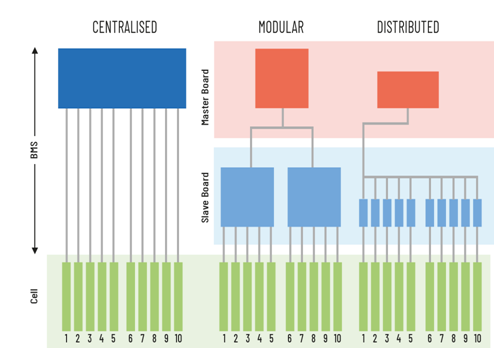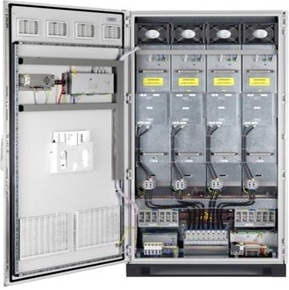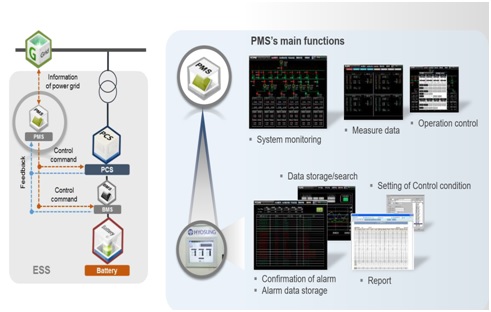Battery Energy Storage Systems (BESS)
Battery Energy Storage Systems (BESS) are advanced technologies designed to store electrical energy in the form of chemical energy and release it when needed. These systems play a crucial role in modern energy management, grid stability, and the integration of renewable energy sources.
Detailed Components of Battery Energy Storage System
but also the leap into electronic typesetting, remaining essentially unchanged. It was popularised in the 1960s with the release of Letraset sheets containing Lorem Ipsum passages.
Battery Types:
Lithium-Ion Batteries:
- Structure: Consist of a cathode, anode, electrolyte, separator, and current collectors. Lithium ions move between the cathode and anode during charging and discharging.
- Advantages: High energy density, long cycle life, and fast charging capabilities.
- Challenges: Cost, thermal management, and safety concerns such as thermal runaway.
Lead-Acid Batteries:
- Structure: Composed of lead dioxide as the positive plate, sponge lead as the negative plate, and sulfuric acid as the electrolyte.
- Advantages: Low cost and reliability.
- Challenges: Low energy density, heavy weight, and shorter lifespan compared to lithium-ion batteries.
Flow Batteries:
- Structure: Use two liquid electrolytes separated by a membrane; energy is stored in liquid form.
- Advantages: Scalability and long cycle life.
- Challenges: Complexity and lower energy density.
Nickel-Cadmium and Other Advanced Batteries:
- Characteristics: Robust, can operate in extreme temperatures, but face environmental concerns due to cadmium.
Battery Management System (BMS):
Functions:
- Cell Monitoring: Tracks voltage, temperature, and state of charge (SOC) of individual cells.
- Balancing: Ensures uniform charge across cells to prevent degradation.
- Protection: Prevents overcharging, over-discharging, and short circuits.
- Data Logging:Records battery performance data for diagnostics and optimization.
BMS Architecture:
Inverter/Converter:
- Cell Monitoring: Tracks voltage, temperature, and state of charge (SOC) of individual cells.
- Type:
- Bidirectional Inverters: Allow both charging and discharging operations.
- Cell Monitoring:High efficiency is critical to minimize energy losses during conversion.
Energy(Power) Management System (EMS-PMS):
- Optimization Algorithms: Use predictive analytics and real-time data to determine the best charge/discharge schedules.
- Demand Response: Adjusts energy storage operations based on grid demand and market signals.
Thermal Management System:
- Active Cooling: Uses fans or liquid cooling to dissipate heat.
- Passive Cooling: Relies on natural convection and conductive materials.
- Importance: Proper thermal management enhances battery life and performance.
Control and Communication Systems:
- Integration: Connects BESS with grid operators, renewable energy sources, and local loads.
- Protocols: Utilize communication standards like Modbus, DNP3, and IEC 61850 for interoperability.
Charging Process :
1. Grid Connection :
- Integration: The BESS is connected to the electrical grid or renewable energy sources (e.g., solar panels, wind turbines) via power electronics and control systems.
- Safety and Synchronization: The system ensures proper synchronization with the grid, handling issues like voltage and frequency variations to prevent disturbances.
2. Energy Flow :
- AC to DC Conversion: When there is excess energy from the grid or renewable sources, it is typically in alternating current (AC) form. The BESS uses an inverter or rectifier to convert AC to direct current (DC) for storage.
- Charging Circuit: The DC power flows through a charging circuit where it is regulated to match the battery’s requirements, ensuring efficient and safe charging.
3. Chemical Storage:
- Energy Storage: The electrical energy is stored as chemical energy within the battery cells. For example, in lithium-ion batteries, lithium ions migrate between the anode and cathode, storing energy during charging.
- Battery Chemistry: Different battery types have different chemical reactions and storage mechanisms, affecting their efficiency, capacity, and longevity.
Discharging Process :
1. Demand Response :
- Triggering Events : The system monitors grid demand and identifies peak usage periods or times of low renewable energy generation.
- DC to AC Conversion: During high demand or when grid power is needed, the stored DC energy is converted back to AC using an inverter or converter.
- Power Control: The system controls the rate at which energy is discharged, balancing grid stability and meeting demand requirements.
2. Grid/Load Supply :
- Energy Distribution : The AC energy is fed back into the grid or used to supply local loads. This process helps to stabilize the grid and reduces reliance on peaking power plants, which are often less efficient and more expensive.
- Load Management: In some cases, the BESS may be used for specific applications such as backup power for critical infrastructure or load leveling for local energy needs.
Energy Management :
1. Dynamic Control :
- Optimization Algorithms : The Energy Management System (EMS) uses algorithms to optimize the operation of the BESS. It takes into account factors such as grid conditions, electricity prices, and energy demand forecasts.
- Operational Scheduling: The EMS schedules charging and discharging cycles to maximize economic benefits, improve grid stability, and ensure reliable energy supply.
2. State Monitoring :
- Battery Management System (BMS) : The BMS continuously monitors the battery’s health, state of charge (SOC), and temperature. It ensures that the battery operates within safe limits and performs maintenance tasks such as cell balancing.
- Performance Tracking : Data on performance, energy throughput, and system health is collected and analyzed to maintain efficiency and predict maintenance needs.
3. Integration with Other Systems :
- Grid Communication : The BESS communicates with grid operators and other energy management systems to coordinate responses to grid signals and market opportunities.
- User Interface : Operators can access real-time data, adjust settings, and receive alerts through user interfaces and control panels.
Additional Considerations :
- Thermal Management : Efficient operation of BESS requires effective thermal management to prevent overheating and ensure optimal performance. This can involve active cooling systems or passive heat dissipation strategies.
- Safety Protocols: Safety mechanisms are in place to handle potential issues such as overcharging, deep discharging, and thermal runaway. This includes protective measures like fuses, circuit breakers, and emergency shutdown procedures.
- Scalability: BESS can be scaled up by adding more battery packs or modules, depending on the required capacity and application.
Battery Energy Storage Systems (BESS) can be categorized based on their integration with the power grid and their scale of deployment. Here’s an in-depth look at on-grid, off-grid, and large-scale BESS:
1. On-Grid BESS :
Definition :
- On-grid BESS are integrated with the electrical grid and are used to support grid stability, enhance energy management, and provide various grid services.
Applications :
- Frequency Regulation:Helps maintain the balance between supply and demand by quickly responding to frequency fluctuations.
- Voltage Support: Provides reactive power to stabilize grid voltage.
- Peak Shaving: Reduces peak demand by storing excess energy during low demand periods and discharging during peak times.
- Renewable Integration: Stores excess energy from renewable sources (solar, wind) and releases it when generation is low or demand is high.
Benefits :
- Grid Stability:Enhances the reliability and stability of the grid.
- Cost Savings: Reduces the need for peaking power plants and lowers electricity costs.
- Renewable Integration: Facilitates higher penetration of renewable energy sources by addressing their intermittency.
2. Off-Grid BESS :
Definition :
- Off-grid BESS operate independently from the electrical grid, typically in remote locations or where grid access is limited or unavailable.
Applications :
- Remote Power Supply:Provides energy for isolated locations like rural areas, remote outposts, and islands.
- Backup Power: Offers energy backup for critical infrastructure in areas prone to power outages.
- Emergency Power: Powers essential services and facilities during grid outages or natural disasters.
Benefits :
- Energy Independence:Provides a reliable power source in areas without grid access.
- Resilience: Ensures continuous power supply in emergencies or during grid failures.
- Renewable Integration: Often used in conjunction with renewable energy sources like solar or wind to create self-sufficient energy systems.
3. Large-Scale BESS :
Definition :
- Large-scale BESS refers to extensive energy storage systems designed for substantial energy capacities, typically deployed for grid support and utility-scale applications.
Applications :
- Grid Balancing:Provides significant capacity to balance grid supply and demand over large areas.
- Renewable Energy Integration: Stores large amounts of energy from renewable sources to ensure consistent supply.
- Frequency Regulation: Offers rapid response to frequency imbalances across extensive grid networks.
- Backup Power: Supplies power during grid outages for large facilities or regions.
Benefits :
- High Capacity:Can store and manage substantial amounts of energy, supporting large grid areas or industrial applications.
- Economic Efficiency: Reduces reliance on fossil-fuel-based peaking plants and lowers grid operation costs.
- Enhanced Reliability: Improves grid reliability and supports large-scale renewable Integration.
Battery Energy Storage Systems (BESS) have a wide range of use cases across various sectors. Here are some of the primary applications:
- Grid Stabilization:BESS can provide grid services such as frequency regulation, voltage support, and load balancing. This helps maintain a stable and reliable electricity supply.
- Renewable Energy Integration: Batteries store excess energy generated from renewable sources like solar and wind when production exceeds demand. This stored energy can then be used when production is low or demand is high, smoothing out the variability of renewables.
- Peak Shaving and Load Shifting: BESS can be used to reduce peak demand charges by discharging stored energy during peak times. This helps utilities and consumers manage energy costs more effectively.
- Backup Power Supply: Batteries provide backup power during outages or emergencies, ensuring continuity of operations for critical infrastructure, businesses, and homes.
- Micro grids and Off-Grid Systems: BESS are essential for micro grids and off-grid systems, enabling reliable and sustainable power supply in remote or isolated areas without connection to the main grid.
- Electric Vehicle Charging: BESS can support fast charging stations for electric vehicles (EVs), helping to manage demand on the grid and provide energy when needed.
- Time-of-Use Optimization: Consumers can use battery storage to buy electricity during off-peak times when prices are lower and use stored energy during peak times when prices are higher, reducing energy bills.
- Industrial and Commercial Applications: In industries with high energy consumption, BESS can help manage demand charges, provide backup power, and integrate renewable energy sources.
- Energy Arbitrage: BESS can be used to buy electricity at low prices during off-peak periods and sell it back to the grid at higher prices during peak demand, creating revenue opportunities.


